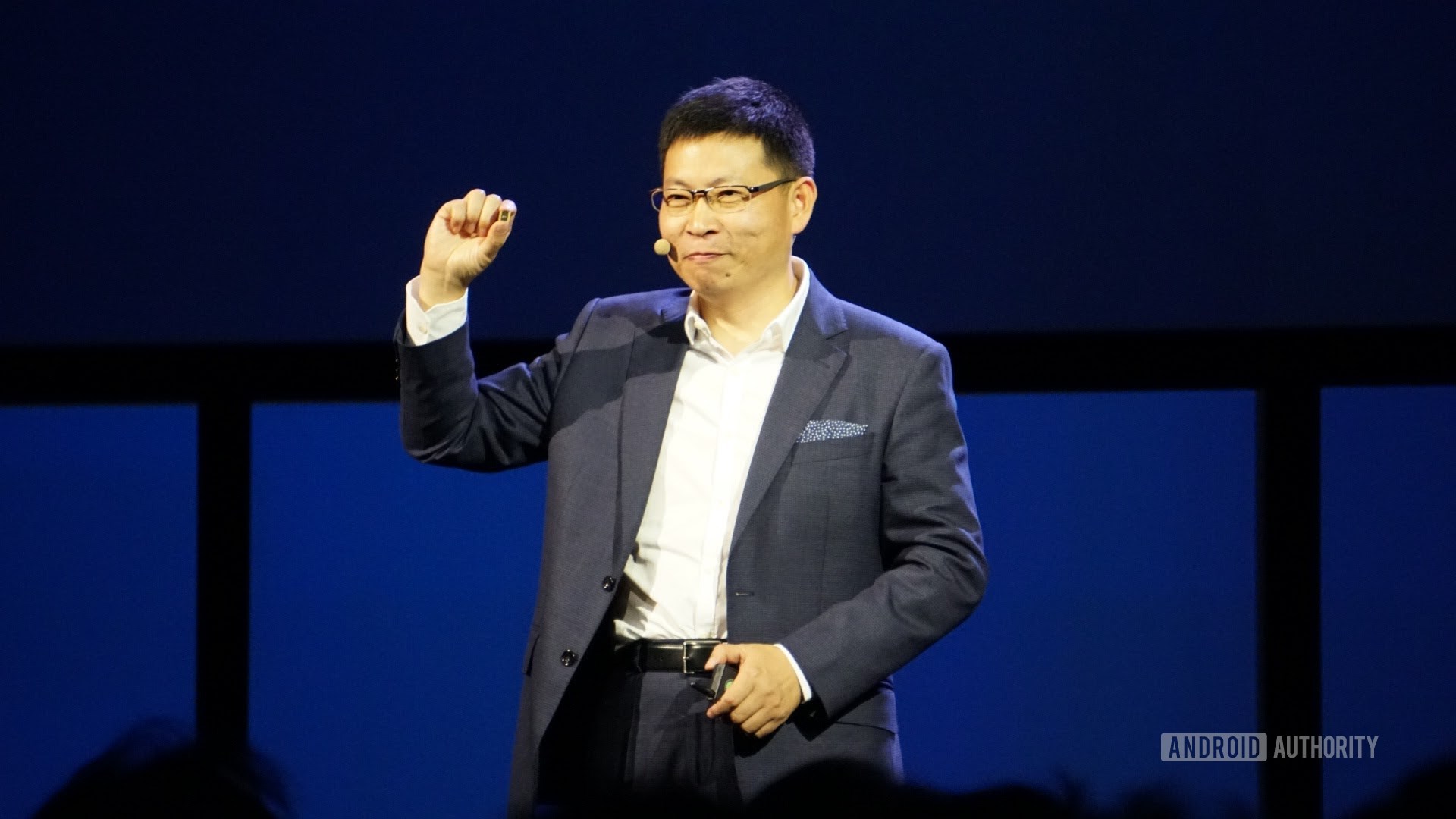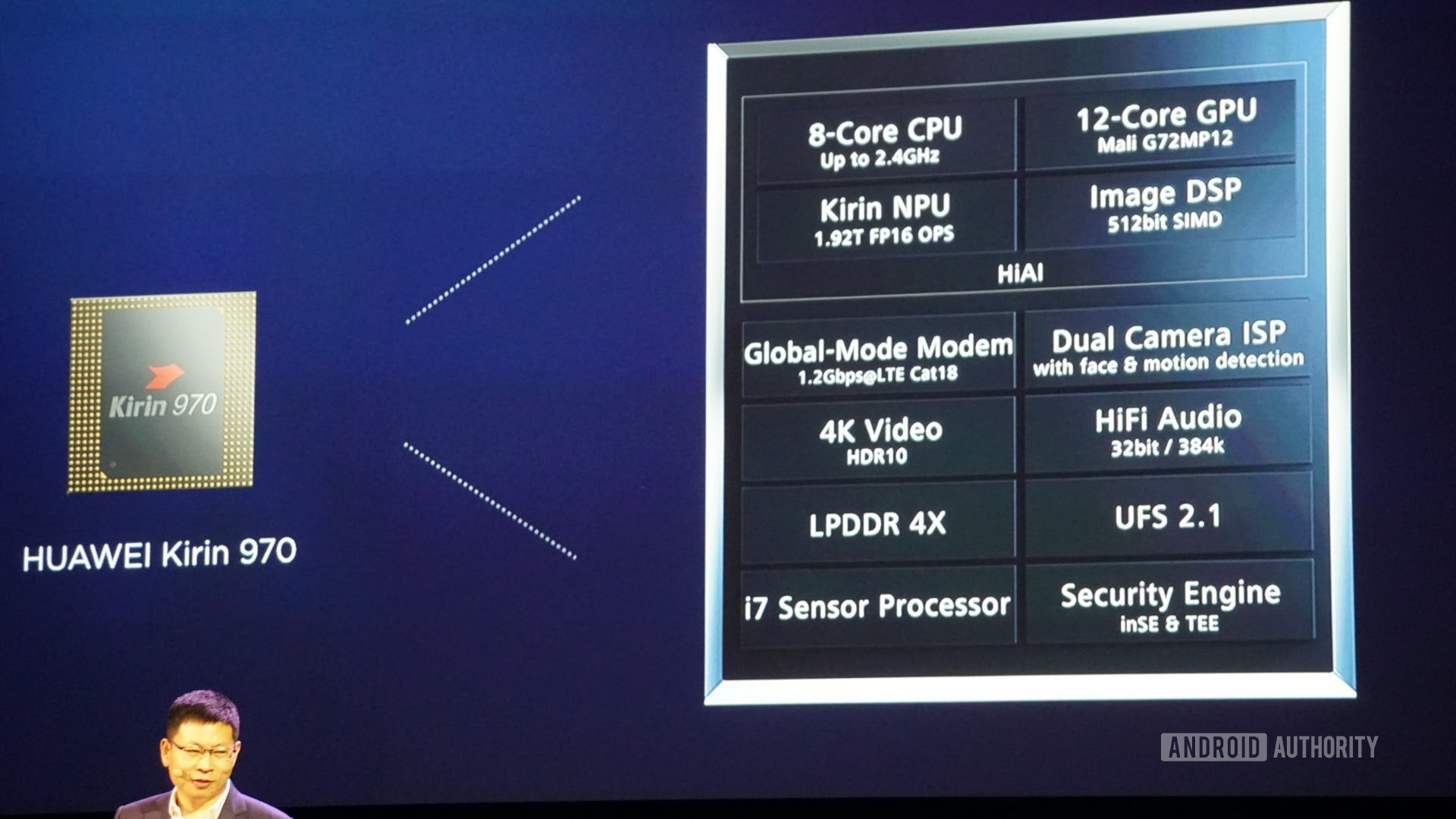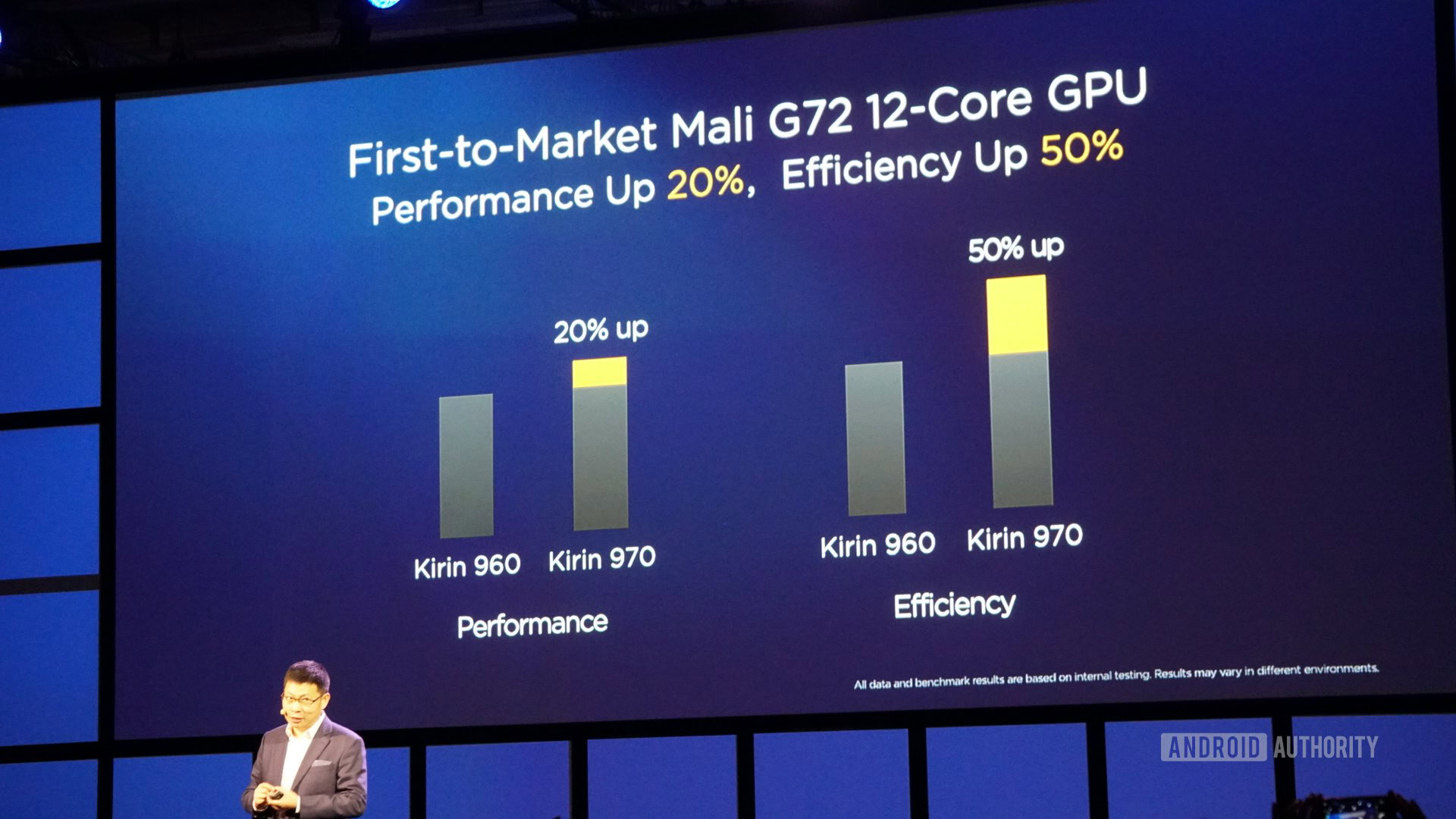Affiliate links on Android Authority may earn us a commission. Learn more.
HUAWEI announces the Kirin 970 - new flagship SoC with AI capabilities

Today HUAWEI has officially unveiled the Kirin 970, the OEM’s new flagship SoC that has built-in AI computing capabilities. While it is normal to fixate on things like the CPU configuration and the GPU setup, HUAWEI is very keen to promote the Kirin 970 as a mobile AI computing platform.
The AI platform runs on a dedicated Neural Processing Unit (NPU), basically a piece of hardware that is very good at running neural networks. When compared to the 970’s CPU, the NPU delivers up to 25 times the performance with 50 times greater efficiency. In other words the Kirin 970 NPU can perform the same AI computing tasks faster and with less power. For example, using a benchmark image recognition test, the Kirin 970 processes 2,000 images per minute, about 20 times faster than if the CPU had to handle the workload on its own.
When it comes to things like AI computing, and in fact super-computing in general, the key benchmark is the number of floating point operations the processor can perform per second. HUAWEI claim that the NPU in the Kirin 970 can perform 1.92 TFLOPs (i.e. teraFLOPS) when using 16-bit floating point numbers (i.e. FP16). FP16 and FP8 have become increasingly important in the field of AI as neural networks use decimal numbers as part of the calculation matrices, however these floating point numbers don’t need to be that accurate (i.e. they don’t need to have too many places after the point). This means that FP16 and FP8 are more important than a full blown 32-bit or even 64-bit floating point numbers.

“As we look to the future of smartphones, we’re at the threshold of an exciting new era,” said Richard Yu, CEO of HUAWEI Consumer Business Group. “Mobile AI = On-Device AI + Cloud AI. HUAWEI is committed to developing smart devices into intelligent devices by building end-to- end capabilities that support coordinated development of chips, devices, and the cloud. The ultimate goal is to provide a significantly better user experience. The Kirin 970 is the first in a series of new advances that will bring powerful AI features to our devices and take them beyond the competition.”
| SoC | Kirin 970 | Kirin 960 | Kirin 950 |
|---|---|---|---|
| SoC CPU | Kirin 970 4x Cortex-A73 @ 2.4GHz 4x Cortex A53 @ 1.8GHz | Kirin 960 4x Cortex-A73 @ 2.4GHz 4x Cortex A53 @ 1.8GHz | Kirin 950 4x Cortex-A72 @ 2.3GHZ 4x Cortex-A53 @ 1.8GHz |
| SoC GPU | Kirin 970 Mali-G72 MP12 | Kirin 960 Mali-G71 MP8 @900MHz | Kirin 950 Mali-T880 MP4 @900MHz |
| SoC Neural Processing Unit (NPU) | Kirin 970 Yes | Kirin 960 No | Kirin 950 No |
| SoC Media processing | Kirin 970 2160p60 HEVC & H.264 Decode 2160p30 Encode HDR10 | Kirin 960 2160p30 HEVC & H.264 Decode & Encode 2160p60 HEVC Decode | Kirin 950 1080p H.264 Decode & Encode 2160p30 HEVC Decode |
| SoC RAM | Kirin 970 4x LPDDR4 | Kirin 960 2x LPDDR4 | Kirin 950 2x LPDDR4 |
| SoC LTE modem | Kirin 970 LTE Cat 18 | Kirin 960 LTE Cat 12 | Kirin 950 LTE Cat 6 |
| SoC Flash interface | Kirin 970 UFS 2.1 | Kirin 960 UFS 2.1 | Kirin 950 eMMC 5.1 |
| SoC Process | Kirin 970 TSMC 10nm | Kirin 960 16nm FinFET | Kirin 950 16nm FinFET |
Looking at the rest of the chip, it is being manufactured by TSMC using a 10nm process. It is an octa-core processor, with a 12-core GPU, dual-ISP and a high speed Cat 18. LTE modem. The CPU is similar to that of the Kirin 960, with four ARM Cortex-A73 cores and four ARM Cortex-A53 cores, but this time clocked at 2.4 GHz and 1.8 GHz respectively. The Kirin 970 is also the first commercial SoC to use the Mali-G72, the latest GPU from ARM. According to HUAWEI, its implementation of the G72 will make the Kirin 970 20 percent faster than the Kirin 960, but yet 50 percent more power efficient.

Other key features worth noting are the support for 4K video decode/encode (H.265, H.264 and others), the ability to handle 10 bit color (HDR10), the next iteration of HUAWEI’s sensor processor (the i7), and a 32-bit/384K DAC. As with the Kirin 960 before it, the 970 supports dual cameras, UFS 2.1 and LPDDR4 (but now at 1833MHz).
To boost 3rd party take-up of the new AI capabilities, HUAWEI is hoping to position the Kirin 970 as an “open platform for mobile AI”, meaning it is opening up the chipset to developers and partners, allowing them to find new and innovative uses for the AI processing capabilities. To that end the Kirin 970 supports Tensorflow / Tensorflow Lite and Caffe/Caffe2.
What do you think? Do the AI capabilities add enough to the Kirin 970 to distinguish it from the Kirin 960? Please let me know in the comments below.